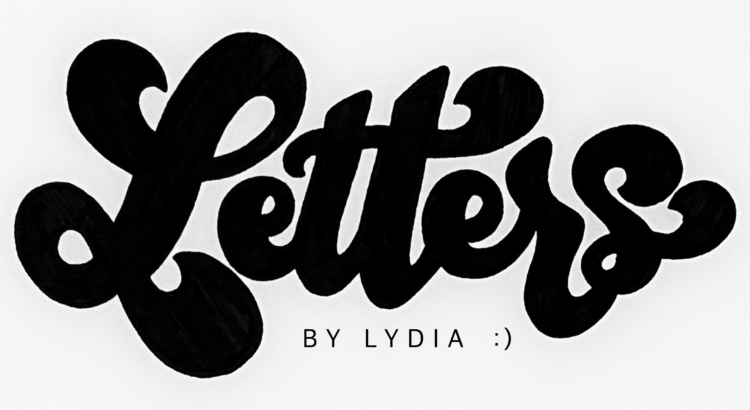Happy end of semester, everyone! Congrats to all for making it through the year, and I hope you’re all settling into the summer. This is my last post of the school year, so I thought I’d leave you all with some ways to stay involved in handlettering and art over the summer.
First off, here are some of my favorite lettering accounts on Instagram, if you’re looking for more inspiration, resources, tips, etc.
If you’re looking for something colorful, bold, digital, and maybe politically progressive, I’d recommend @inkusdingus or @glitterandbold. For satisfying process videos and lots of juicy pens, I’d turn to @lettersandlattesllc (who also happens to be a fellow Michigander!), or @the_letter_salon. For bullet journaling inspiration, definitely check out @thegraytergood, and for pen and stationery recs, look no further than @amandarachlee. As for other favorites of mine, @snooze.one is a more experimental, graffiti-inspired typographer, and @keeplivingfaster is definitely the page to visit if you want watercolor lettering and lots of glitter. Finally, if you want a page to get some general inspo and find lots of artists, my favorite account is @goodtype. Enjoying your scrolling!
Now, if you want some website recommendations for some stationery shopping, here my go-to’s for that.
JetPens is a classic for keeping up with new pens as well as finding the classics, plus it has lots of variety and is reasonably priced. Stationery Pal is really fun for specialty or limited edition items, cheap stationery (like, super cheap), and colorful and fun pens, trinkets, etc. Shipping takes a bit, but in my opinion the price makes it worth it. Tokyo Pen Shop is a new one I’ve been perusing, so I can’t speak to how it is to order from them, but they have a lot of fun and unique items. For more stationery rather than pen-centered products, Present and Correct is a really fun one to check out for a very vintage, specialized feel. And, of course, Amazon is always a fast and cheap option. If you want to do some in-person shopping, Michael’s, Blick Art Materials, and even stores like Barnes and Nobles are all good options. For Ann Arbor stores, I’d check out Rock Paper Scissors, Papersource, and Found. There are tons of independent stationery stores everywhere, though, so if you’re traveling somewhere, it’s never a bad idea to look up stationery stores in that area (I’ve found some really good ones that way!). Happy shopping!
I hope that information is helpful and gives you a lot to look into over the summer if you’re interested! Either way, I hope you all have a relaxing few months and do some art if you can or want to 🙂





 Positive space is the thing itself, and negative space is the lack of the thing, or what’s around it. On the left, you can see that the “Hi” is written using negative space, because the color exists all around it, but the letters themselves are empty. On the right, the “Hi” is an example of positive space, because it is the thing itself (by contrast, the white all around it is negative space).
Positive space is the thing itself, and negative space is the lack of the thing, or what’s around it. On the left, you can see that the “Hi” is written using negative space, because the color exists all around it, but the letters themselves are empty. On the right, the “Hi” is an example of positive space, because it is the thing itself (by contrast, the white all around it is negative space).



 The tips are flexible enough that you can use them as if they were brush pens, but you can also use them on their sides like highlighters, and with an even amount of pressure to get a consistent line. Depending on how hard you press, the thickness varies wildly, which is another great quality because it makes them super versatile. Another positive is that, because they’re inexpensive, you don’t have to feel bad about overusing them, experimenting with them, or not taking great care of them.
The tips are flexible enough that you can use them as if they were brush pens, but you can also use them on their sides like highlighters, and with an even amount of pressure to get a consistent line. Depending on how hard you press, the thickness varies wildly, which is another great quality because it makes them super versatile. Another positive is that, because they’re inexpensive, you don’t have to feel bad about overusing them, experimenting with them, or not taking great care of them.










